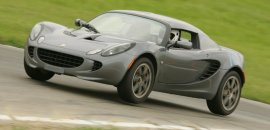CalipersFrom TrackpediaBrake calipers are essential to your car's ability to stop and are arguably one of the most important automobile brake parts. Most cars today have disc brakes, at least for the front wheels, anyway. But a lot of cars and trucks are now using disc brakes in the rear, too. In a disc-braking system the car's wheels are attached to metal discs, or rotors, that spin along with the wheels. The job of the caliper is to slow the car's wheels by creating friction with the rotors. The brake caliper fits over the rotor like a clamp. Inside each caliper is a pair of metal plates bonded with friction material -- these are called brake pads. The outboard brake pads are on the outside of the rotors (toward the curb) and the inboard brake pads on the inside (toward the vehicle). When you step on the brake, brake fluid from the master cylinder creates hydraulic pressure on one or more pistons in the brake caliper, forcing the pads against the rotor. The brake pads have high-friction surfaces and serve to slow the rotor down or even bring it to a complete halt. When the rotor slows or stops, so does the wheel, because they're attached to one another. There are certain limitations to just how much the vehicle's brakes and its calipers can do to stop a vehicle; while they may be able to bring the wheels to a stop, it's up to the gripping power of the tires to do the rest, and improved brake parts can't help beyond a certain point. However, there are several ways in which brake calipers can be (and have been) improved. Some common features found in performance brake calipers include: * Bigger pistons -- The larger the pistons are, and the greater the area over which they come in contact with the brake pads, the more clamping force they have on the rotor.
* More pistons -- Low-end floating brake calipers have a single piston, on the inboard side. Low-end fixed calipers have a single pair of pistons, flanking the rotor disc. High-performance calipers can have multiple pins or pairs of pins, mounted on opposing sides of the rotor. Six-piston models are increasingly common and even 12-piston models are not unheard of. Increasing the number of pistons also serves to increase the clamping force of the caliper.
* Less heat retention -- In a sense, your brakes can be thought of as a device for converting movement into heat. As the vehicle slows down, all of that kinetic energy has to go somewhere and most of it ends up as heat. If you want to look at it another way, all that friction between the brake pads and the rotor generates heat in much the same way that striking a match generates heat. If too much heat builds up, the brakes begin to fade, or become less effective. So, the better ventilated the brake calipers are, the better they perform. Also, the larger the surface of the brake rotor, the more the heat is spread out.
* Differential bore calipers -- As the surface of the rotor heats up, the clamping force of the pistons has to be increased to avoid brake fade. If the caliper has multiple pistons (or multiple pairs of pistons), the brake rotor surface is initially heated by the pistons pushing against the brake pad at the leading edge of the caliper, making the rotor surface hotter when it rotates back to the pistons closer to the trailing edge of the caliper. Therefore it helps if the pistons closer to the rear edge of the caliper are larger. Differential-bore calipers use smaller pistons up front, larger pistons toward the back.
All of these technologies can increase the braking power provided by a caliper. For smaller cars that typically aren't driven at high speeds, this extra braking power isn't really necessary. However, the faster and more powerful a vehicle is, the more it will benefit from high-performance calipers. An overused and faulty caliper is rebuilt, which actually means cleaning the pistons, and replacing seals. The caliper can be maintained by keeping it clean and avoid overheating the brake system. Caliper build-up is considered only after other brake system components have been checked. Referenced materialhttp://auto.howstuffworks.com/auto-parts/brakes/brake-parts/brake-calipers.htm |
